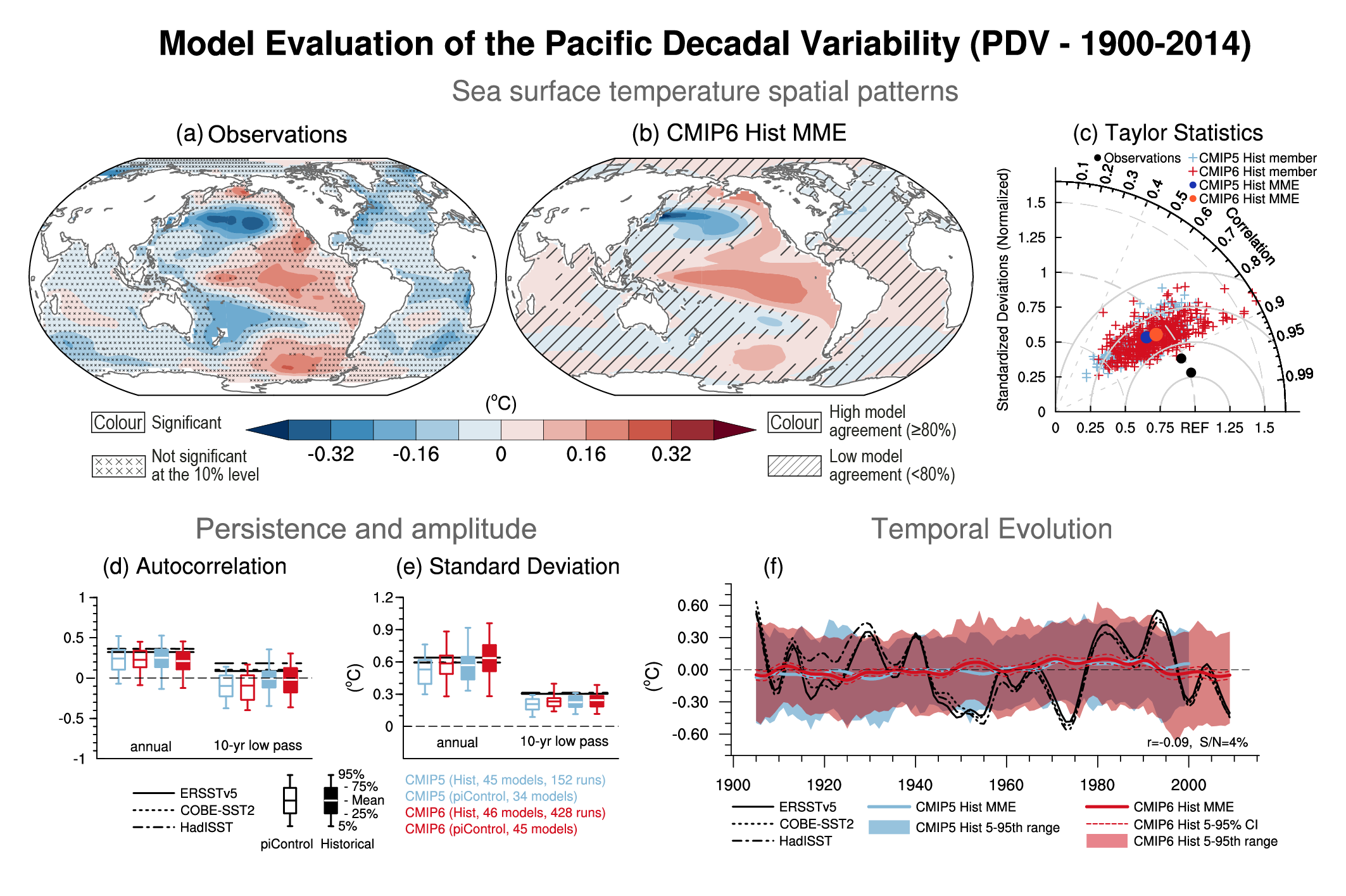Back chapter figures
Figure 3.39
Figure caption
Figure 3.39 | Model evaluation of the Pacific Decadal Variability (PDV). (a, b) Sea surface temperature (SST) anomalies (°C) regressed onto the Tripole Index (TPI; Henley et al., 2015) for 1900–2014 in (a) ERSST version 5 and (b) CMIP6 multi-model ensemble (MME) mean composite obtained by weighting ensemble members by the inverse of the model ensemble size. A 10-year low-pass filter was applied beforehand. Cross marks in (a) represent regions where the anomalies are not significant at the 10% level based on a t-test. Diagonal lines in (b) indicate regions where less than 80% of the runs agree in sign. (c) A Taylor diagram summarizing the representation of the PDV pattern in CMIP5 (each ensemble member is shown as a cross in light blue, and the weighted multi-model mean as a dot in dark blue), CMIP6 (each ensemble member is shown as a cross in red, and the weighted multi-model mean as a dot in orange) and observations over 40°S–60°N and 110°E–70°W. The reference pattern is taken from ERSST version 5 and black dots indicate other observational products: Hadley Centre Sea Ice and Sea Surface Temperature data set version 1 (HadISST version 1) and Centennial in situ Observation-Based Estimates of Sea Surface Temperature version 2 (COBE-SST2). (d) Autocorrelation of unfiltered annual TPI at lag one year and 10-year low-pass filtered TPI at lag 10 years for observations over 1900–2014 (horizontal lines), 115-year chunks of pre-industrial control simulations (open boxes) and individual historical simulations over 1900–2014 (filled boxes) from CMIP5 (blue) and CMIP6 (red). (e) As in (d), but showing standard deviation of the unfiltered and filtered TPI (°C). Boxes and whiskers show weighted multi-model means, interquartile ranges and 5th and 95th percentiles. (f) Time series of the 10-year low-pass filtered TPI (°C) in ERSST version 5, HadISST version 1 and COBE-SST2 observational estimates (black) and CMIP5 and CMIP6 historical simulations. The thick red and light blue lines are the weighted multi-model mean for the historical simulations in CMIP5 and CMIP6, respectively, and the envelopes represent the 5th–95th percentile ranges across ensemble members. The 5–95% confidence interval for the CMIP6 multi-model mean is given in thin dashed lines. Further details on data sources and processing are available in the chapter data table (Table 3.SM.1).
